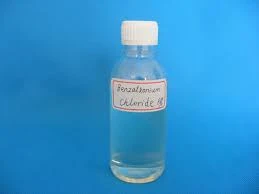coagulation flocculation
Coagulation and Flocculation Key Processes in Water Treatment
Coagulation and flocculation are essential processes in the field of water treatment, which are commonly used to remove suspended solids, colloids, and other impurities from water. These processes not only improve the clarity and quality of water but also help in ensuring the safety of drinking water supplies. Understanding the mechanisms behind coagulation and flocculation is crucial for optimizing water treatment systems, ensuring public health, and protecting the environment.
Coagulation The Initial Step
Coagulation is the first step in the treatment process and involves the addition of chemical coagulants to water. Common coagulants include aluminum sulfate (alum), ferric chloride, and polymeric coagulants. When these chemicals are added to water, they increase the charge neutrality and reduce the electrostatic repulsion among suspended particles, such as silt, clay, and organic matter. This neutralization causes the particles to aggregate and form larger particles, known as micro-flocs.
The effectiveness of coagulation largely depends on several factors, including pH, temperature, and the concentration of suspended solids. Proper adjustment of these parameters is essential to achieve optimal coagulation. For instance, aluminum sulfate requires an acidic pH range, while ferric chloride is effective over a broader pH range. Continuous monitoring and adjustment are necessary to ensure that conditions remain favorable for coagulation.
Flocculation The Secondary Step
coagulation flocculation

Following coagulation, the flocculation process takes place. Flocculation involves gentle mixing of the water to encourage the aggregation of micro-flocs into larger flocs. This step typically employs a slower mixing rate compared to coagulation, allowing the micro-flocs to collide and stick together without breaking apart. Flocculants, which may include natural substances like starch or synthetic polymers, can also be added during this phase to enhance floc formation.
The time and intensity of flocculation are crucial. Insufficient flocculation may result in smaller, weaker flocs that do not settle effectively, while excessive flocculation may cause flocs to break apart. The goal is to achieve optimal floc size that can be easily removed in the subsequent sedimentation or filtration stages.
Sedimentation and Filtration
Once flocculation is complete, the next stages in water treatment are sedimentation and filtration. In sedimentation, the larger flocs, now called “macro-flocs,” settle at the bottom of the treatment vessel due to gravity, forming a sludge layer. The clarified water above the sediment is then drawn off for further treatment. Filtration may follow, where the remaining impurities are removed, ensuring that the treated water meets safety and quality standards.
Conclusion
The importance of coagulation and flocculation in water treatment cannot be overstated. These processes are vital for the production of safe drinking water and the treatment of wastewater. As water quality standards continue to evolve, there is a growing need for more efficient and sustainable coagulation and flocculation methods. Researchers and engineers are continuously exploring new coagulants and flocculants, along with innovative treatment technologies, to enhance the effectiveness and efficiency of these key processes. By understanding and improving coagulation and flocculation, we pave the way for better water management and environmental protection, contributing to a healthier and more sustainable planet.
-
2-Phosphonobutane-1,2,4-Tricarboxylic Acid: Scale & CorrosionNewsAug.29,2025
-
Premium Isothiazolinones | Broad-Spectrum Biocidal SolutionsNewsAug.28,2025
-
LK-319 Special Scale And Corrosion Inhibitor For Steel Plants: Advanced Solutions for Industrial Water SystemsNewsAug.22,2025
-
Flocculant Water Treatment: Essential Chemical Solutions for Purification ProcessesNewsAug.22,2025
-
Isothiazolinones: Versatile Microbial Control Agents for Industrial and Consumer ApplicationsNewsAug.22,2025
-
Scale Inhibitor: Key Solutions for Water System Scale PreventionNewsAug.22,2025





